Education Effect on Depression and Quality of Life in Nondemented Parkinson’s Disease Patients
METHODS
Patients
Patient Evaluations
Statistics
RESULTS
Patient Characteristics and Univariate Comparison of Educational Level Groups
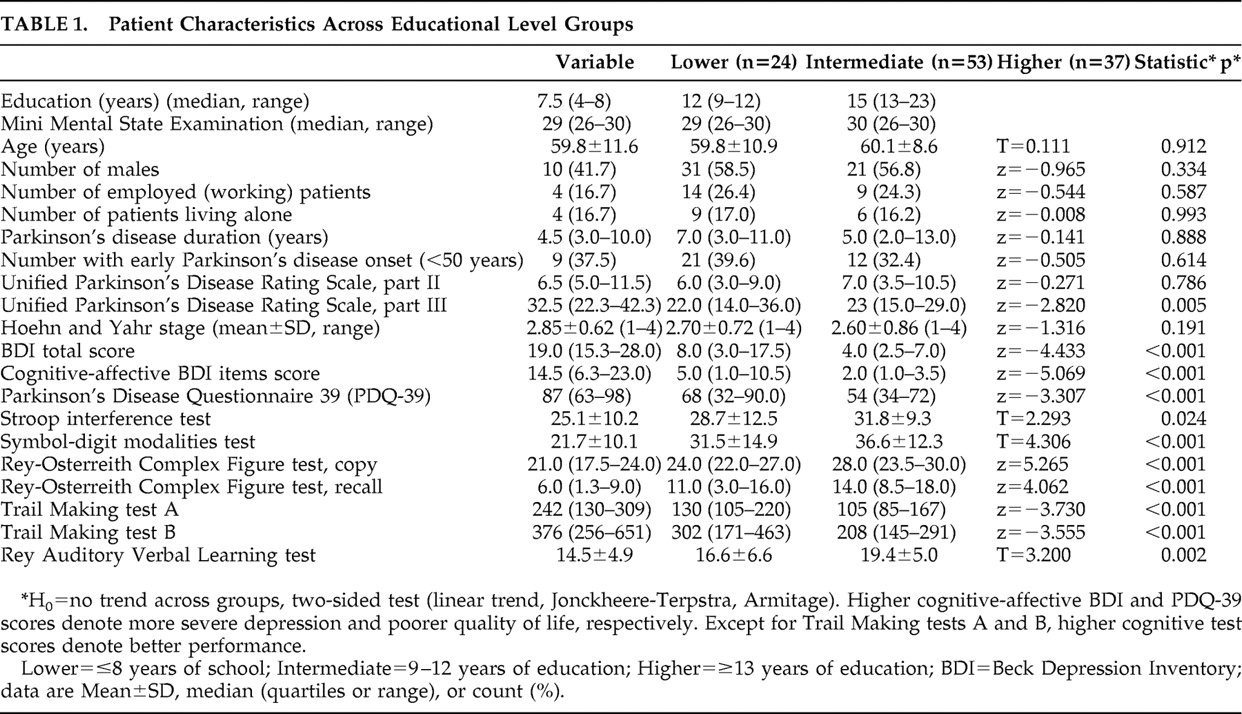
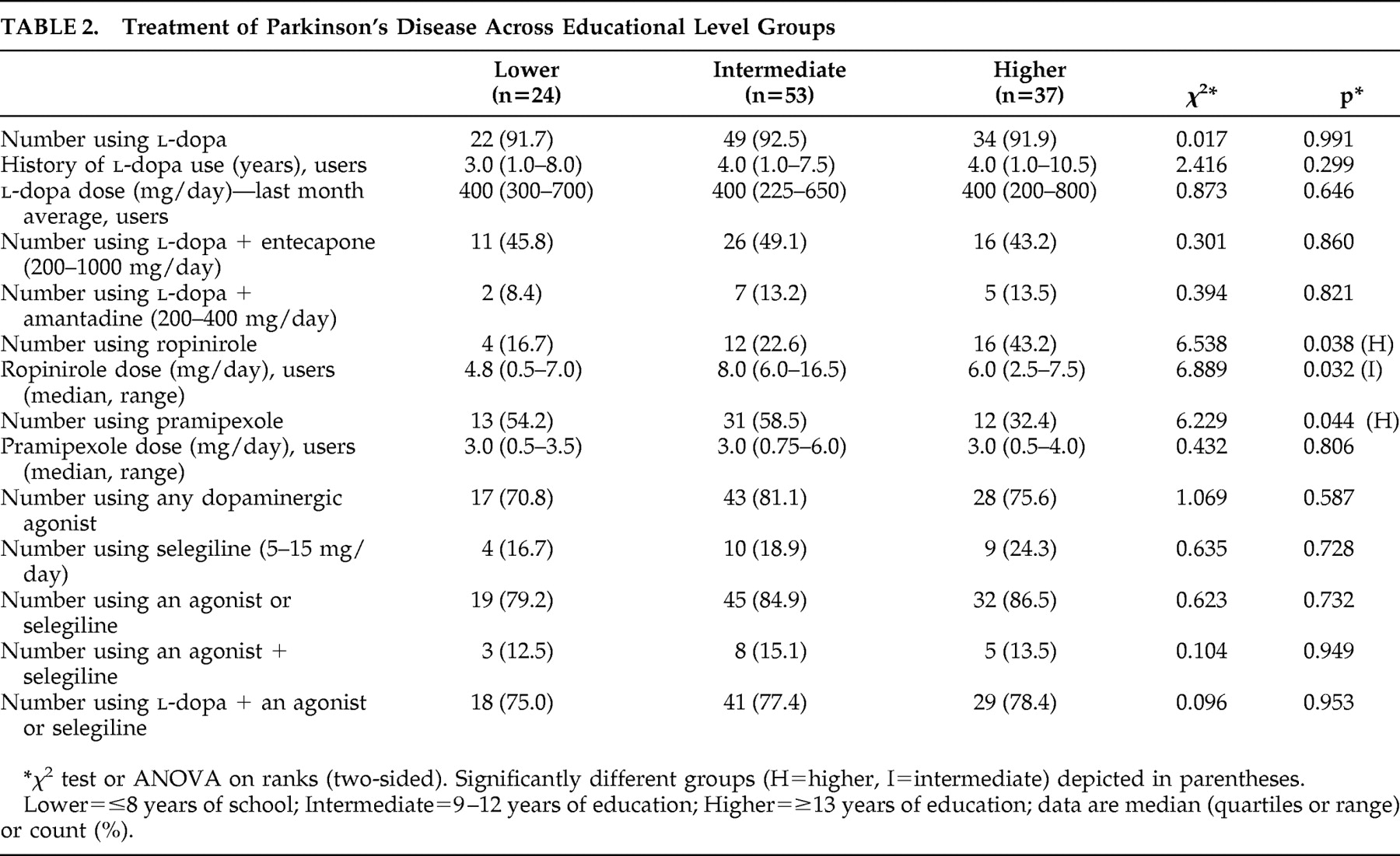
Principal Components Analysis
Adjusted Comparison of Educational Level Groups With Respect to Level of Depression
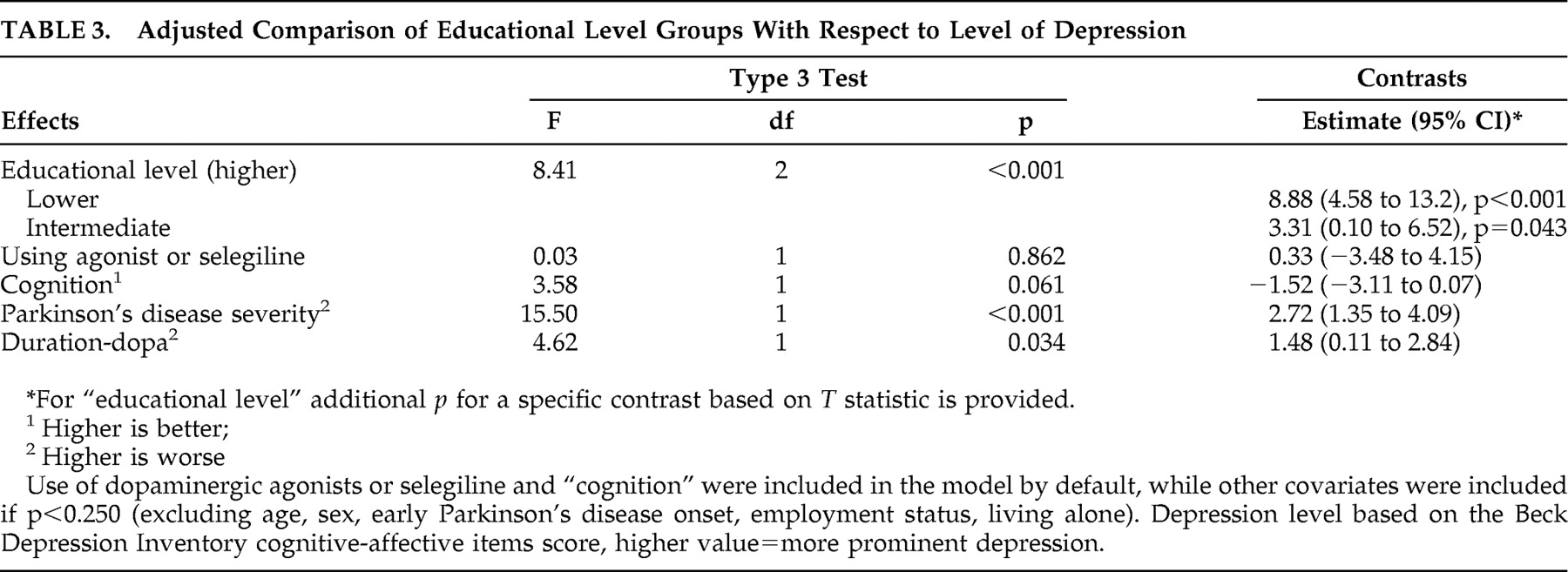
Adjusted Comparison of Educational Level Groups With Respect to Cognitive Performance
Adjusted Comparison of Educational Level Groups with Respect to Health-Related Quality of Life

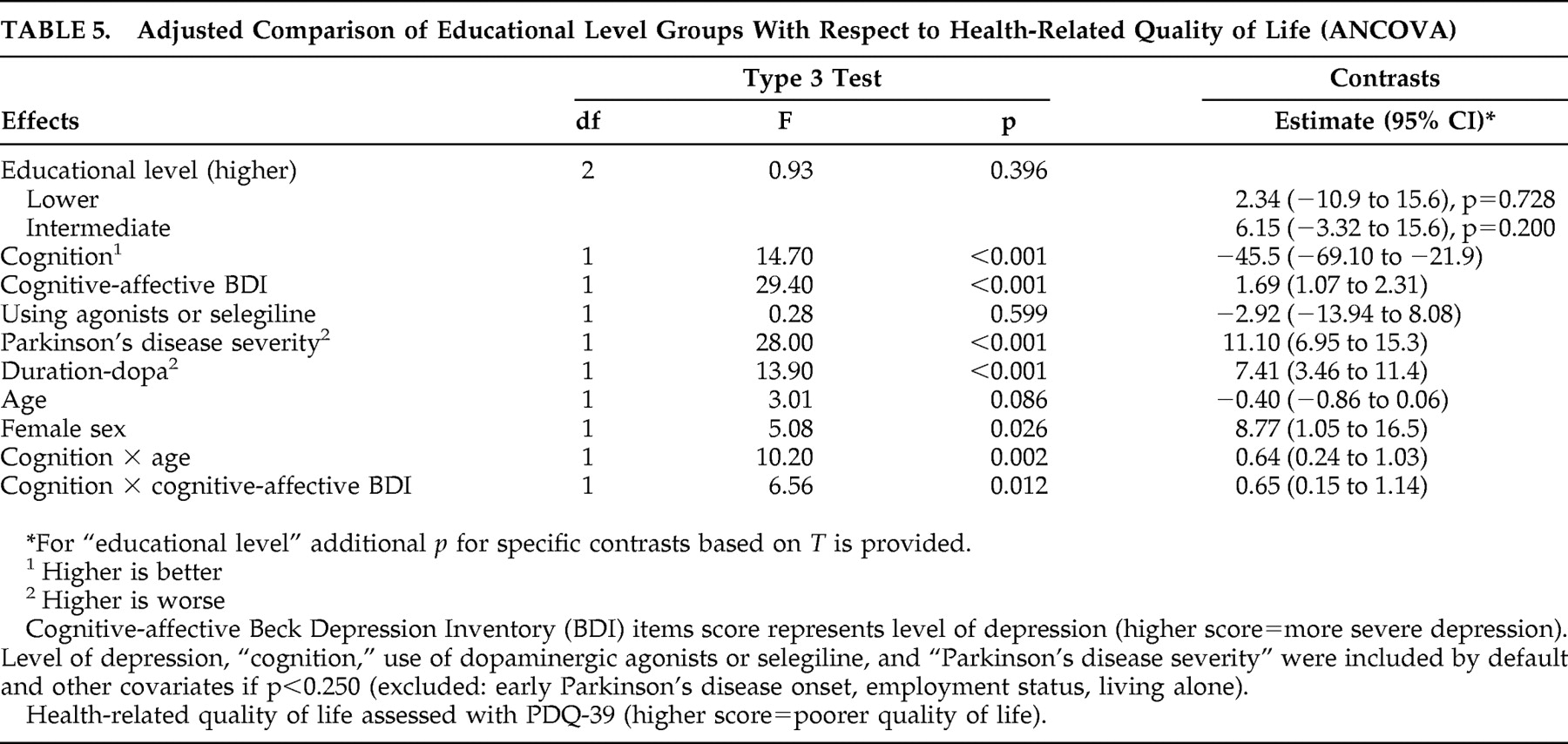
Patient Clustering Based on Depression Level and Health-Related Quality of Life
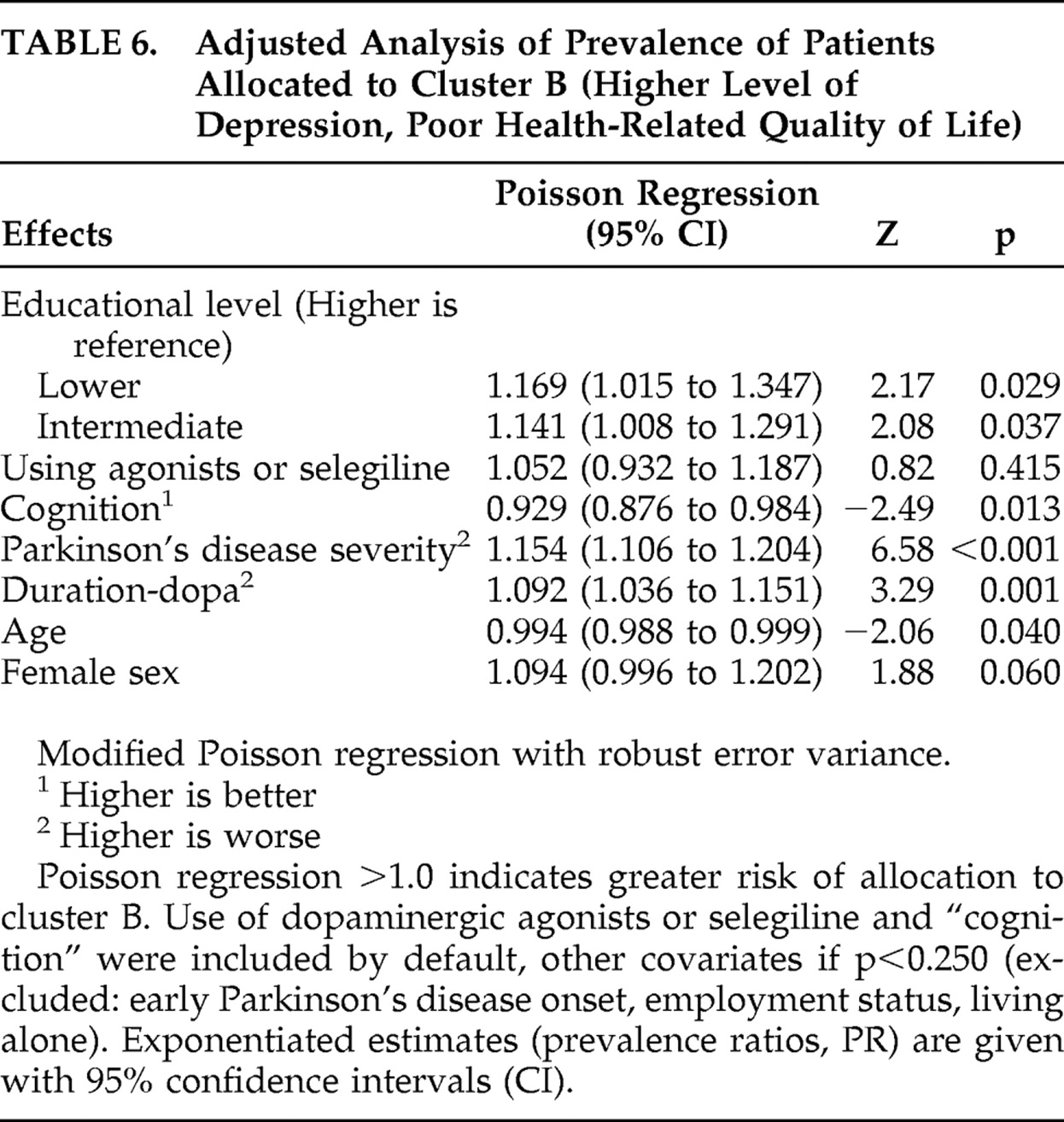
DISCUSSION
Acknowledgments
Footnote
References
Information & Authors
Information
Published In
History
Authors
Metrics & Citations
Metrics
Citations
Export Citations
If you have the appropriate software installed, you can download article citation data to the citation manager of your choice. Simply select your manager software from the list below and click Download.
For more information or tips please see 'Downloading to a citation manager' in the Help menu.
View Options
View options
PDF/EPUB
View PDF/EPUBGet Access
Login options
Already a subscriber? Access your subscription through your login credentials or your institution for full access to this article.
Personal login Institutional Login Open Athens loginNot a subscriber?
PsychiatryOnline subscription options offer access to the DSM-5-TR® library, books, journals, CME, and patient resources. This all-in-one virtual library provides psychiatrists and mental health professionals with key resources for diagnosis, treatment, research, and professional development.
Need more help? PsychiatryOnline Customer Service may be reached by emailing [email protected] or by calling 800-368-5777 (in the U.S.) or 703-907-7322 (outside the U.S.).

